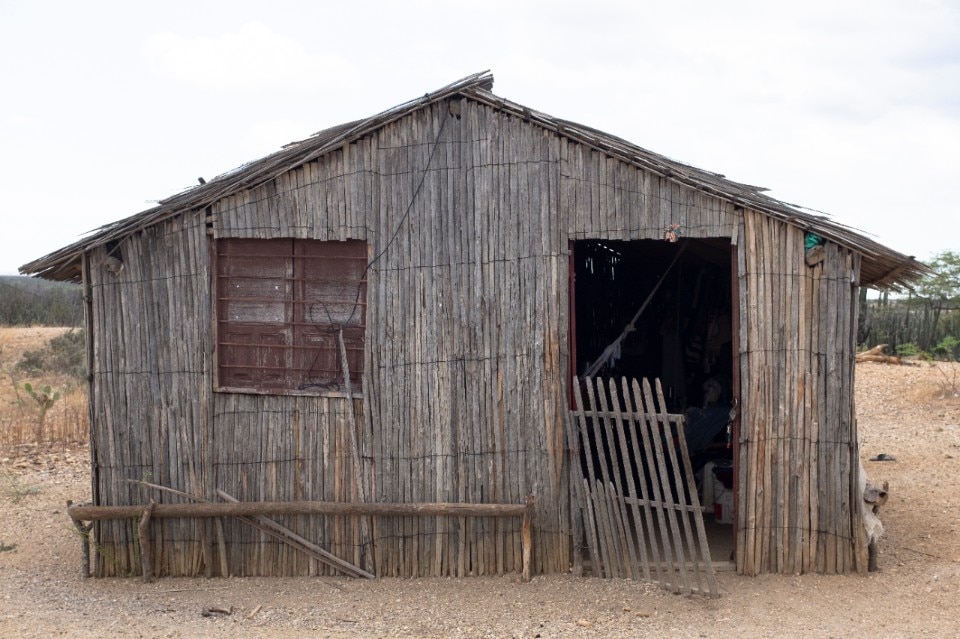text and photography by Kurt Hollander
La Guajira is a vast desert region of Colombia located in the most northeastern extreme of the country, wedged between the Caribbean coast and the Venezuelan border. It is the driest, poorest, most remote area of the country, and it is also the country’s largest and most populated indigenous reservation, home to the Wayúu.
The vast desert region of La Guajira is pretty much off-limits to anyone other than the Wayúu. Contact with the outside world has been limited to religious institutions (the Catholic Church arrived with the Spanish conquistadores, and US-based Protestant sects have been making inroads recently) and with government institutions that offer very meager assistance. Tourism in La Guajira is mostly limited to one town on the Caribbean coast which is reached by the region’s only roadway, and almost no foreigner ever enters into the desert. As there are no marked roads, no street signs, no addresses, and not even names of the villages, only locals who own a motorcycle can navigate the region.
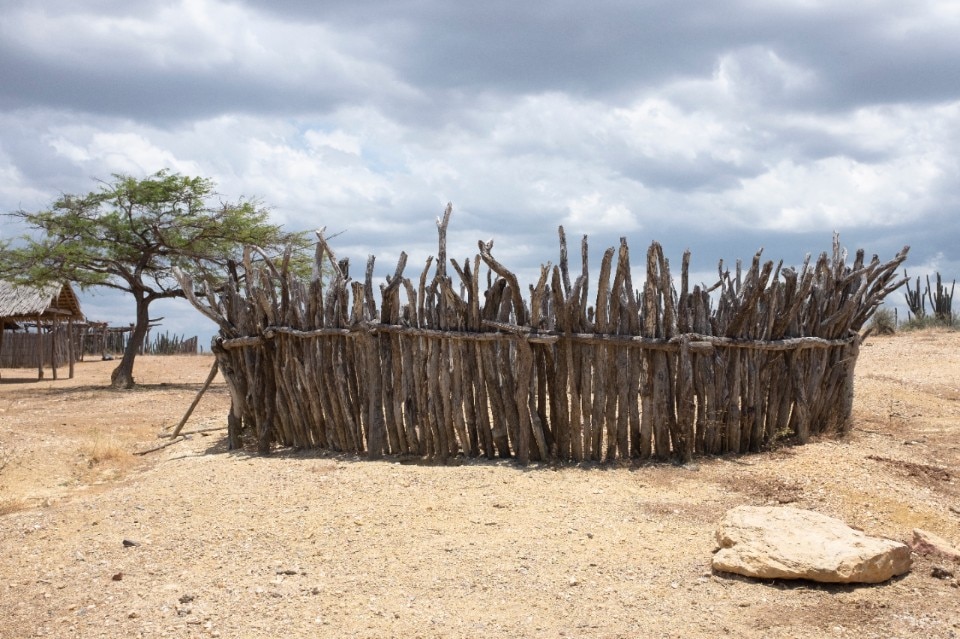
To get access to the desert communities, I went to the government office of Indigenous Affairs in Uribia, the Indigenous Capital of Colombia, a small city on the edge of the desert, where I was put in touch with Morris, a guide and a Wayúu cacique (chief). For a fee, Morris arranged for me to be taken by motorcycle to the home of his sister’s family, a three-hour trip from Uribia, where he used to live before he moved to the city.
Wayúu families live in rancherias, that is, plots of land with houses for family members, a communal kitchen, a bath house (the desert serves as a WC), and a patio under a roof from which hang large hammocks (chinchorros). The extended family of maternal cousins and uncles, with houses built at a discreet though visible distance, are all part of a clan, and the clans within a certain territory in turn make up indigenous communities. Only those with direct family ties can live in these communities, and almost no one from outside of the clans ever enters their land. The women in the clan rarely leave their homes except to visit nearby family, and few of the Wayúu living there have traveled further than Uribia.
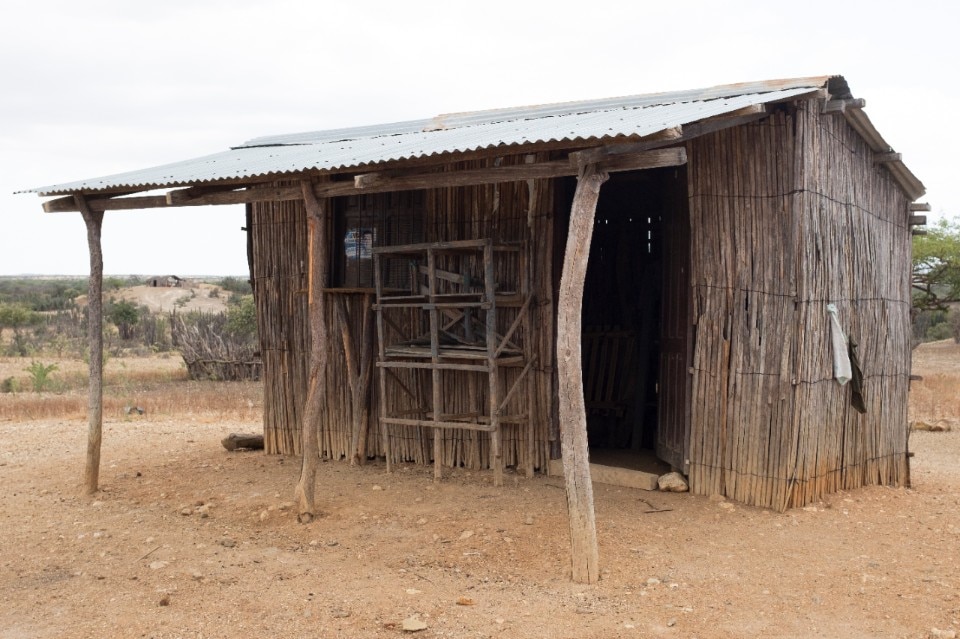
I stayed three nights inside the desert, sleeping in a chinchorro made by Morris’ sister, eating corn arepas and goat meat. I visited the local cemetery, church, water well, abandoned school and homes of the extended family, as well, and I took photographs of all the constructions the Wayúu have built for themselves. For the past few years, while living in Colombia, I have been traveling around the country documenting what I call authentic architecture, that is, architecture made by the people who inhabit their own homes, and without having seen much proof, I was certain that I would find such authentic architecture deep within this desert.
No formal study has ever been made of Wayúu desert architecture, and photographs of their homes are usually only used to show the poverty in which they live. This is, of course, a distortion of reality, for although the average income of locals is way below national averages, the desert itself provides them with almost everything they need, and for free, and their millennial culture and traditions provide them with the know-how to construct wonderful homes for themselves.

Deep inside the desert, far from the bright lights, pollution and rampant consumerism of towns and cities, Wayúu architecture, like the lifestyle of the inhabitants, can be described as elegantly minimal, constructing efficient, comfortable shelter with natural, local materials that have been utilized and refined over the course of hundreds of years.
Just as the yotojoro cactus and local trees are perfectly adapted to exist within the extreme weather conditions in the desert, so too the homes by the Wayúu are also well adapted to provide for all the needs of human beings living in such a harsh environment.
La Guajira, a vast desert in the northeast of Colombia, is the country’s driest region, the windiest, and one of the hottest. These extreme conditions tend to break down solid matter and lead to erosion, thus stressing and truncating the lifespan of any structure located within the desert.
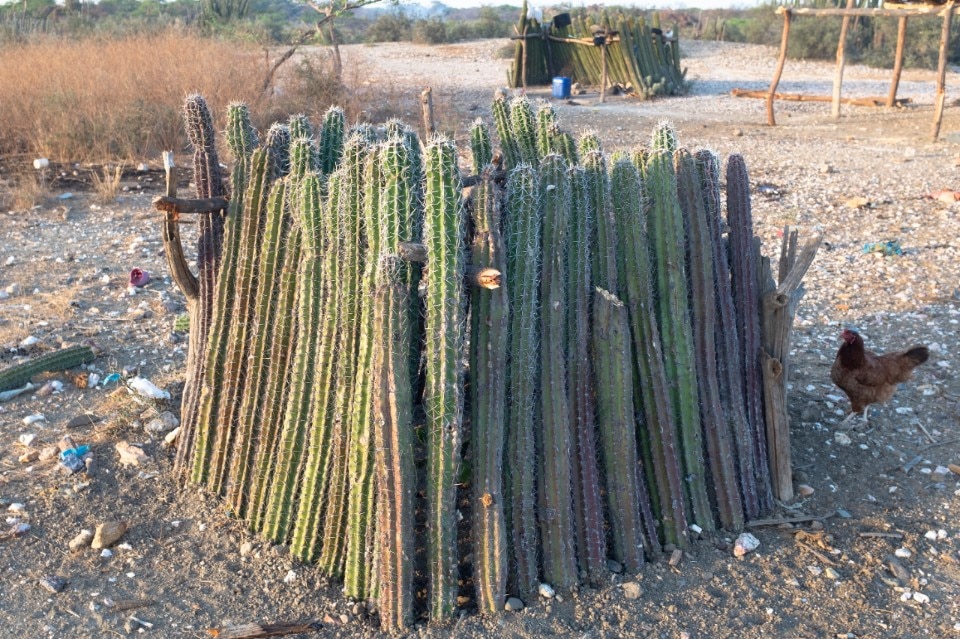
Peoples’ homes in the Wayúu communities, and the corrals that house their goats and chickens, as well, are built from local materials, including plants, trees and the earth itself. The most common building material, and the one that is most unique to La Guajira, is yotojoro. A tall desert cactus, after three years of life yotojoro can be dried out to provide wooded slats for siding and rooftops and is fully resistant to water and sun. Complementing the use of yotojoro, local trees supply the wood used mostly for structural support. Just as the yotojoro cactus and local trees are perfectly adapted to exist within the extreme weather conditions in the desert, so too the homes by the Wayúu, constructed from them, are also well adapted to provide for all the needs of human beings living in such a harsh environment.
The homes that exist today in the La Guajira desert are basically the same design and constructed from the same materials as homes built centuries ago, except for minor additions such as a zinc or asbestos roof or a metal or wooden door. Being that the natural materials used in the construction of homes are free and readily available all around throughout La Guajira, traditional Wayúu architecture is 100% renewable.
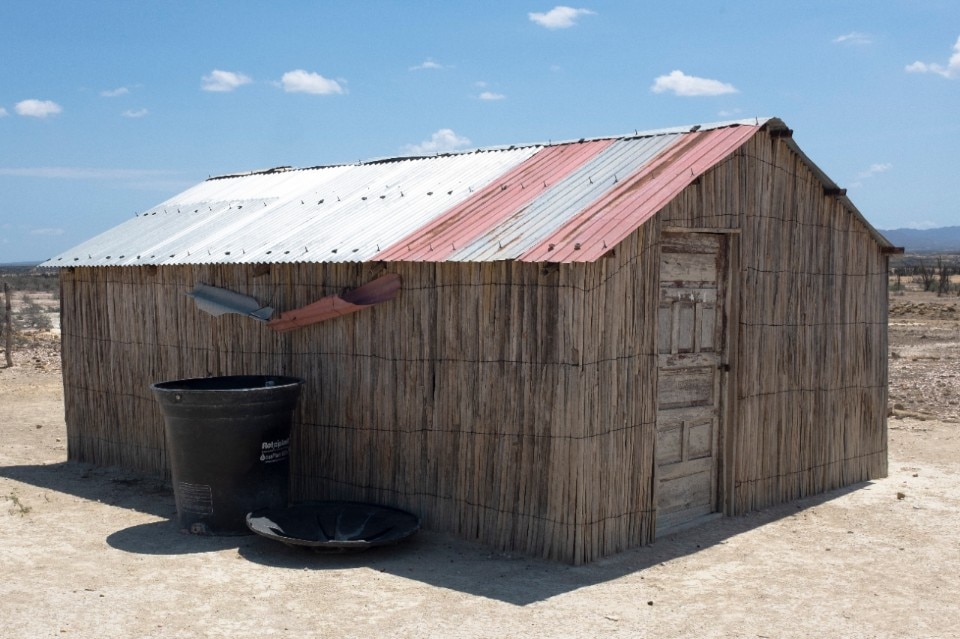
Despite how well the homes of the Wayúu are adapted to the desert and despite the fact that they are free to build, there have been several constructions in the desert that seek to “improve upon” traditional Wayúu architecture. The most recent, a modernized version of traditional Wayúu architecture, is an elementary school located along the highway, paid for by a foundation based in Florida that constructs buildings, and designed by a professional architect from Bogota. Although traditional materials, such as mud, wood and yotojoro, were used to build the structure, the building has a metal roof and rests upon a thick cement base.
In addition, both the man-made and natural materials were purchased in and had to be transported from a nearby city into the desert. The cost of the construction, and the imported materials and architect, means that when the materials crack or erode, there will most likely be neither funding nor knowledge of how to maintain the structure, and it too will eventually be abandoned and left to crumble back into the desert.
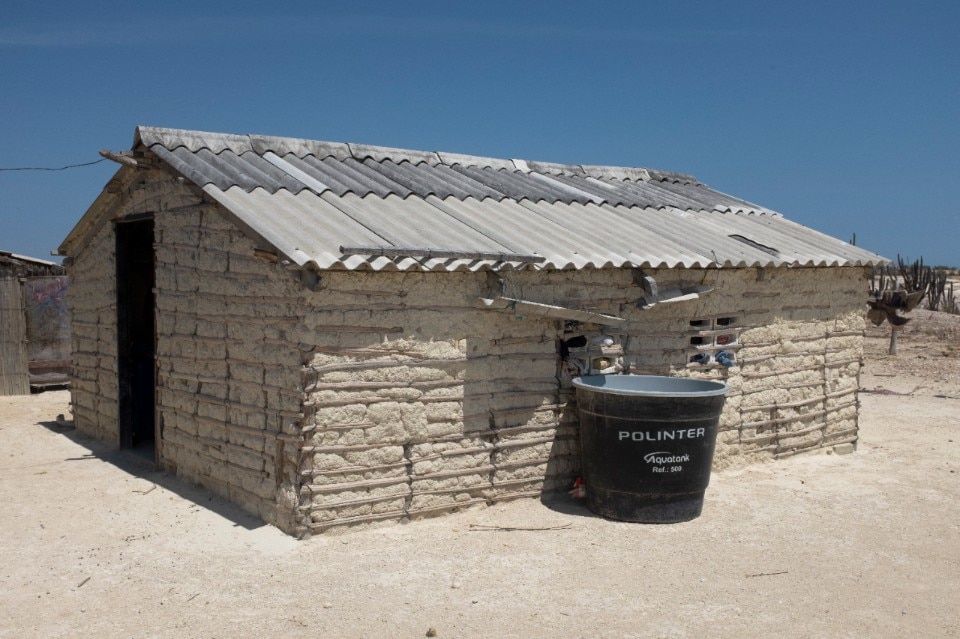
This is also the case with the schools built by local governments for communities in La Guajira. These large cement structures require large budgets to build and the materials used in the construction must be transported in from great distances. Although cement lasts longer than natural materials, it too eventually succumbs to the extreme heat and dryness of the desert. The dozens of abandoned concrete structures that litter the desert, with toppled walls and their roofs caved in, can be seen as monuments or tombstones to modern techniques and materials that are not adapted to the environment or culture in which they exist.
The tension between traditional and modern materials and designs exists not just in the homes of those living in the desert, but also in the homes of the dead. The burial grounds of the Wayúu ancestors were for centuries built with just rocks and branches from local trees, while the remains of their bodies were buried in ceramic vases, a way in which to allow human bodies to be reabsorbed by the earth. With the arrival of evangelical missionaries into the heart of the desert in the last few decades, cement tombs that are constructed to resist any interaction with the environment have replaced ancestral burial grounds throughout the desert.
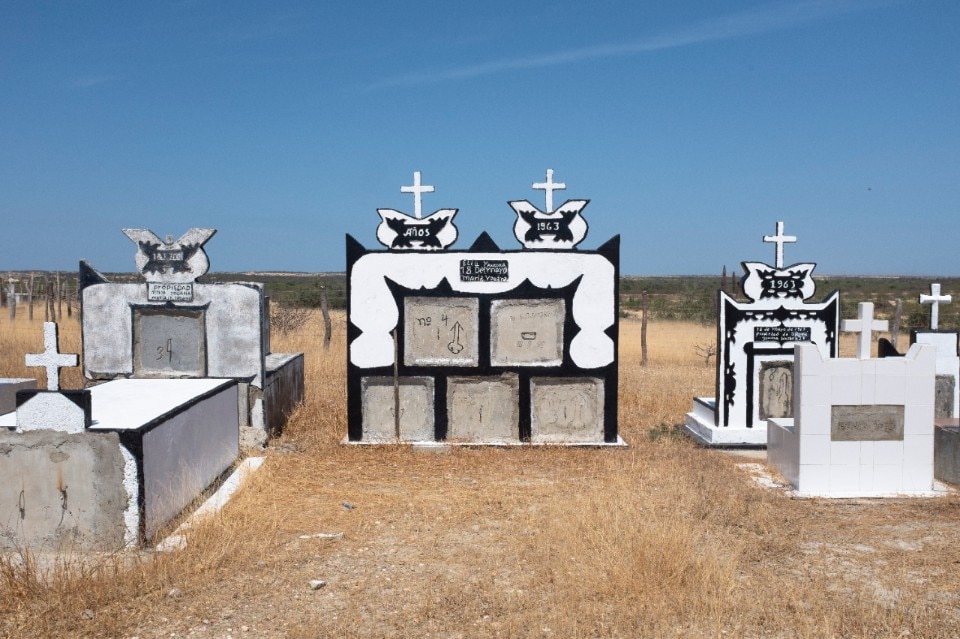
It is true that, in the extreme heat and dryness of the La Guajira desert, the local, natural construction materials (yotojoro, mud and wood) used in the construction of the homes of the living and the dead have a relatively short shelf-life. And yet, it is precisely this impermanence, which forces the Wayúu people to constantly rebuild their homes, that keeps the traditional Wayúu architecture alive. These homes are perfectly adapted not just to the climate but also to the local economy (they can be rebuilt in a day with no cost at all), and just as important, they are the repositories of Wayúu millennial culture. Although poverty rates and malnutrition run high in La Guajira, the locals at least have the advantage over most of humanity in that they are blessed with authentic homes of their own construction that reaffirm their roots to the desert and their ancestors.


